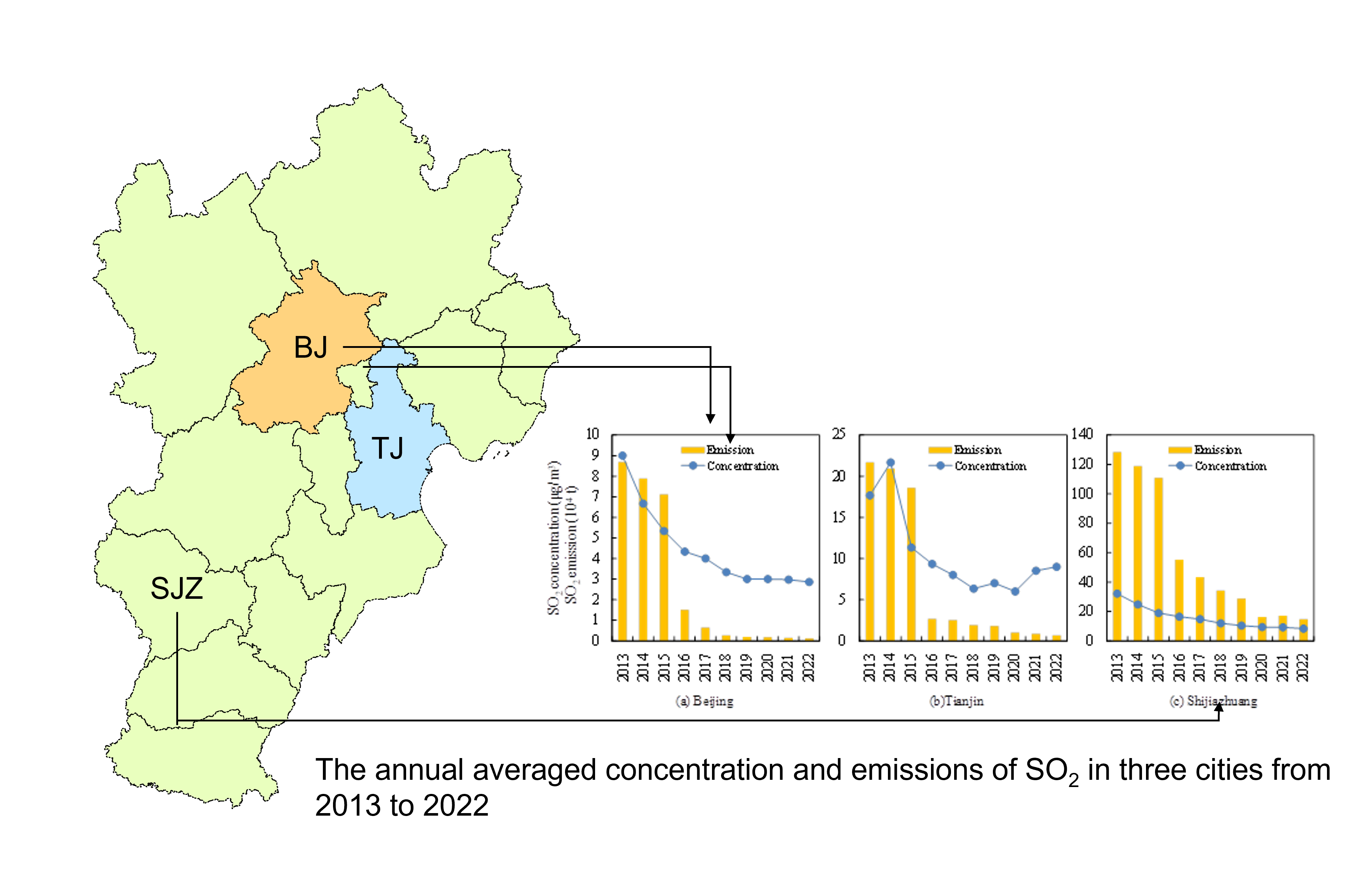
Based on the monitoring data of air pollutants in Beijing-Tianjin-Hebei regions from 2012 to 2022, the spatial-temporal distribution of SO2 concentration and main influencing factors were analyzed through multi-methods of Daniel trend test, KZ filtering and WRF/CMAQ model simulations. From 2013 to 2022, the annual averaged concentrations of SO2 in Beijing, Tianjin and Hebei regions were all in obvious downward trends, and all passed the Daniel trend test (α=0.01). The annual averaged concentration of SO2 in Beijing, Tianjin and Hebei regions decreased from 26.6~114.3μg·m-3 in 2013 to 3.0~11.0μg·m-3, with the decline rates fluctuating from 2.62~11.81μg/(m3·yr) while the decrease rate of SO2 in Beijing was the lowest. The average annual concentration of SO2 in Tangshan city decreased the most, reaching 92.3% and it changed to be the smallest, about 78.2% in Chengde City. The reduction of coal consumption in the Beijing-Tianjin-Hebei regions significantly reduced atmospheric SO2 emissions and directly reduced the regional average concentration of SO2. Meteorological factors were generally conducive to the diffusion of SO2 concentration during 2013~2022, and the meteorological factors contributed about 0.4~5.5% in 13 cities in Jingjinji area while the contribution of anthropogenic emission reduction was 94.5~99.6%. The inter-annual variation of meteorological factors in summer from 2013 to 2022 was not conducive to the diffusion of SO2 concentration on the whole, and the contribution changed to -52.6 ~ -1.0% in 13 cities. From June to August in summer under the easterly and southerly winds, the SO2 concentration in Beijing was basically twice that of the northerly and westerly winds. The contribution of southwest transport channel to SO2 concentration in Beijing was 33.5%, while it changed to 38.9% in the southeast transport channel. Therefore, strengthening the management and control of air pollutants in surrounding area of Beijing is helpful for Beijing to further reduce the levels of air pollutants and achieve targets of air quality improvement in the 14th Five-Year Plan period.
Total file downloads: 27